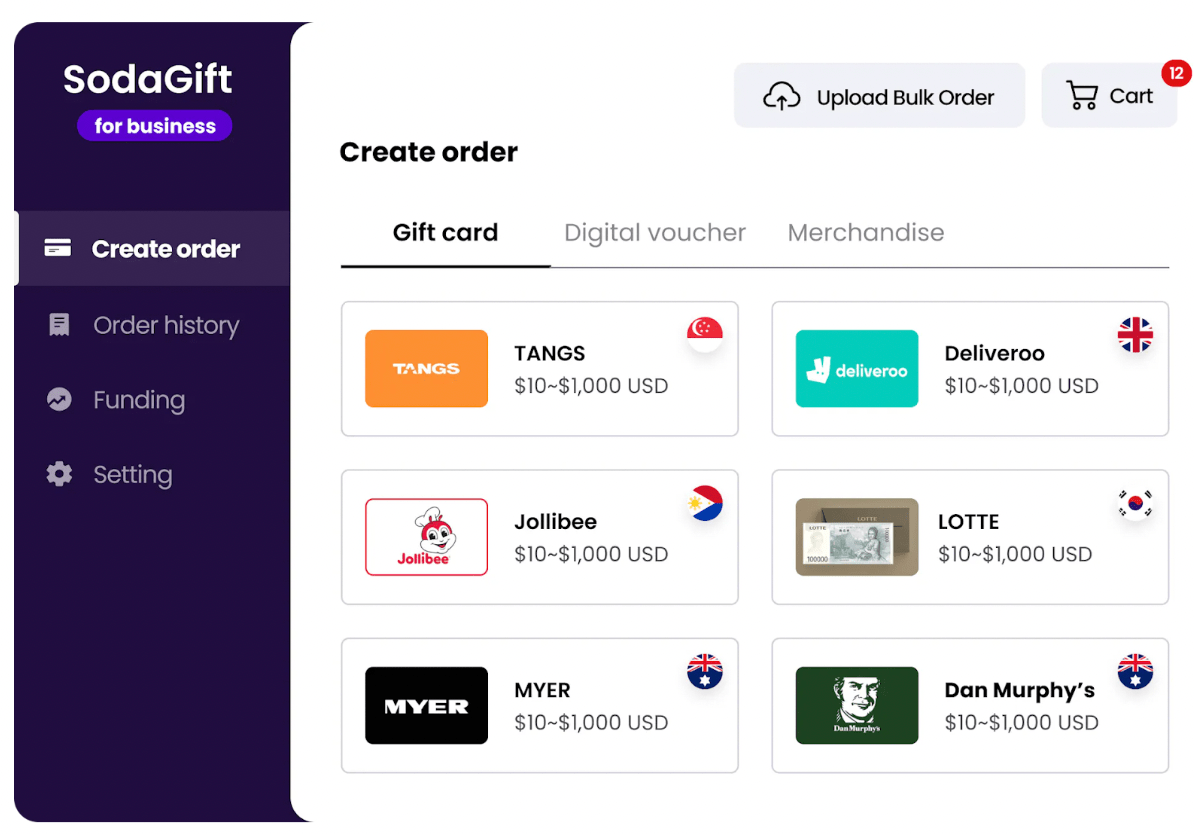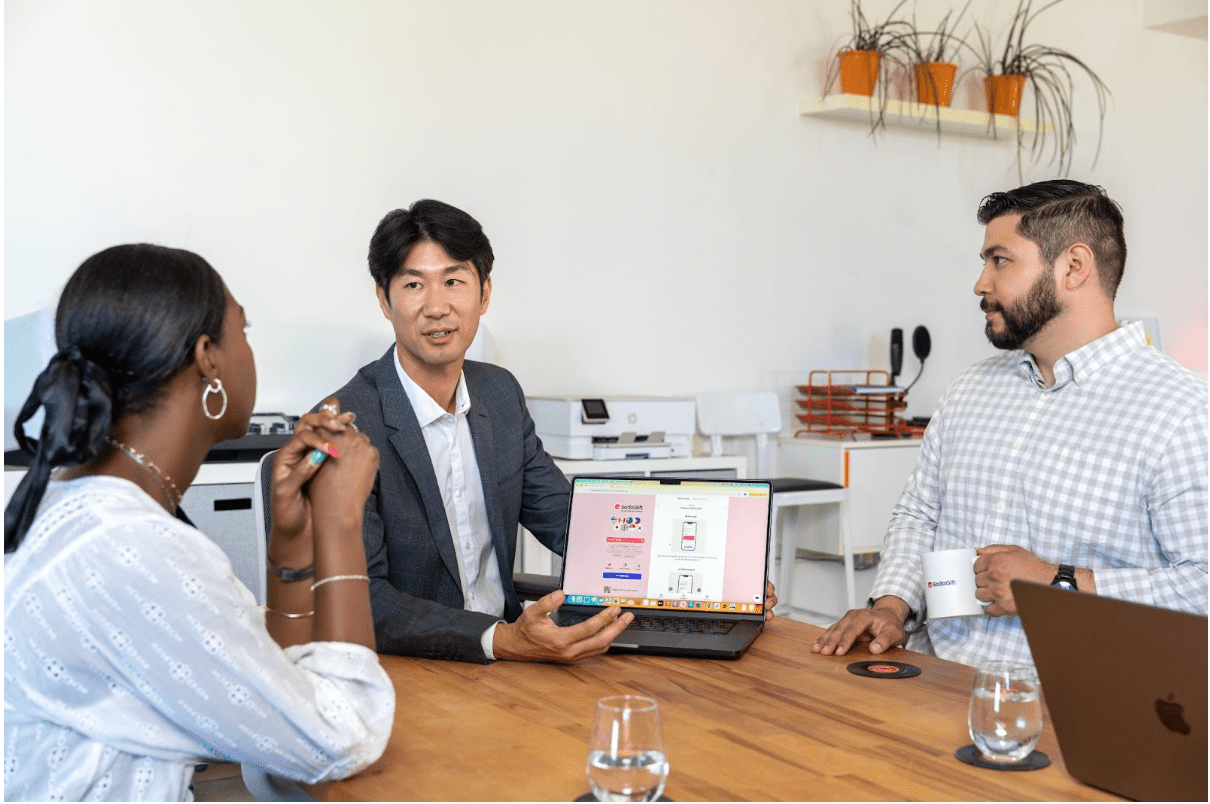Business
The SodaGift Way of Enhancing Business Relationships Through International Gift-Giving

By: Georgette Virgo
In recent years, shifting workplace dynamics have transformed the traditional office landscape. The rise of hybrid work or fully remote work setups has altered how teams communicate and show appreciation for one another.
Gift-giving, once a straightforward and face-to-face activity, has evolved into a nuanced practice heavily influenced by international gift-giving services like SodaGift. These platforms have redefined how organizations express gratitude, aligning with the modern work setup where connection transcends physical presence.
How does the rise of international gift-giving services change how team members connect?
The Role of Corporate Gift-Giving
Corporate gift-giving has long been vital for organizations aiming to establish loyalty, boost morale, and recognize hard work. A carefully chosen gift serves as compensation for a job well done and a tangible expression of appreciation for employees’ dedication and effort. This practice is more than mere tradition; it nurtures an environment where employees feel valued, ultimately driving motivation and enhancing job satisfaction.
Within the framework of hybrid and remote work, the meaning of corporate gift-giving grows exponentially. As face-to-face interactions are limited and often nonexistent, gifts symbolize relationships and connection. Sending a well-thought-out gift can bridge the gap, encouraging a sense of belonging among team members wherever they are located.
According to Jake Kim, CEO of Sodacrew Global Inc., the parent company of SodaGift, technology has made international gift-giving possible. Though teams are scattered worldwide, innovative international gift-giving services like SodaGift maintain team engagement, ensuring no employee feels overlooked or disconnected, even if they just see each other via computer screens.
SodaGift: International Gift-Giving Service Simplified
Giving gifts is ideal for conveying deep team appreciation, celebrating important company milestones, and strengthening workplace relationships. However, this heartfelt gesture has traditionally been fraught with challenges. The logistics of international shipping, including customs regulations, delivery delays, and high costs, often deter many organizations from engaging in international gift-giving services.
The limited choice of gifts that could safely and legally traverse international boundaries further complicates the process, sometimes resulting in generic or impersonal presents that fail to capture the sender’s true intentions.
This is where SodaGift materializes, transforming international gift-giving services into a seamless and personalized experience. By offering gift-giving services tailored to eight specific countries, such as the U.S., the United Kingdom, Canada, Australia, South Korea, Singapore, Japan, and the Philippines, SodaGift effectively eliminates logistical hurdles. For Kim, this targeted approach ensures that gifts are sourced and delivered locally, bypassing the hurdles of international shipping.
Kim says, “In the corporate world, time is everything. We want companies to get the best of both worlds of international gift-giving services: fast and reliable yet well-thought-of.”
SodaGift’s strategic partnerships with well-known retailers in these countries expand the range of gift options while ensuring cultural relevance.
For instance, in a global workplace setting, teams can strengthen their relationships by acknowledging and celebrating important cultural events of their team members, such as Korean Thanksgiving or Chuseok. By effortlessly browsing through SodaGift’s curated selection of Chuseok gift ideas and baskets, they can easily express their thoughtfulness and participate in celebrations that matter to their colleagues.

Taking Corporate Gift-Giving to the Next Level
SodaGift has broadened its services to cater to businesses, offering a specialized platform for corporate gifting and rewards called SodaGift for Business. This expansion allows companies to utilize SodaGift’s expertise in international gift-giving for their business needs, including employee incentives, customer loyalty programs, and corporate rewards, regardless of geographical boundaries.
With coverage now extending beyond its original B2C markets (US, UK, Australia, Philippines, Singapore, Japan, South Korea, and Canada), SodaGift for Business now includes France, India, Indonesia, Thailand, Malaysia, Taiwan, and China. This makes the company a market leader for corporate gifting in Asia.
Kim explains that the value of SodaGift for Business lies in its versatility and ease of use. Companies can choose from a wide array of options, including gift cards, digital vouchers, and physical merchandise, ensuring that they can find the perfect gift for any corporate occasion or cultural context.
In addition, corporates are also given the freedom to use either the self-serve platform, where they can directly manage their gifting and rewards programs through SodaGift’s interface, or through SodaGift for Business’ API (Application Programming Interface) services, integrating gifting capabilities into their own systems for more seamless gifting process and workflow.
Kim emphasizes, “SodaGift for Business is designed to meet the fast-paced demands of modern work environments, transforming gift-giving from a time-consuming task into a smooth, efficient part of corporate relationship-building and employee recognition.”
The Future of Maintaining Corporate Relationships
As remote work becomes commonplace, the need for genuine connections has never been more vital. SodaGift enables organizations to uphold their commitment to employee appreciation by facilitating seamless international gift-giving.
With these innovative gift-giving solutions, the future of corporate culture hinges not only on productivity but also on appreciation and recognition, ensuring that every team member feels valued, no matter where they are in the world.
Business
Spynn’s PR Playbook for Startups Turning Funding into Market Leadership

Byline: Jennyfer Ann Valencia
The recent funding boom in India, where startups raised over $428 million between March 10 and March 15, 2025, reinforces the critical role of public relations (PR) in securing investor confidence and enhancing visibility. As competition intensifies, effective PR strategies help startups differentiate themselves and build a strong market presence.
Spynn, a PR agency for startups specializing in securing top-tier media coverage, enables startups to craft compelling narratives that attract investors and maintain a positive brand image.
The Role of PR in Startup Funding
A recent survey conducted by Spynn found that startups with a strong PR strategy are significantly more likely to secure funding rounds than those without. According to the research, nearly 70% of investors say media visibility and brand credibility helped their decision-making process. This highlights PR’s direct impact on a startup’s ability to attract investment.
PR helps startups articulate their value to investors by securing media coverage and highlighting their growth potential. High-profile placements lend credibility and set up startups’ potential, making them more attractive to investors. For instance, a well-publicized success story from a startup like Zolve, one of the top funding recipients, can drive further investor interest and strengthen its brand.
India’s funding surge spans sectors including Batterytech, Edtech, Gaming, Apparel, Aerospace, Manufacturing, Fintech, Energy, and Travel. While this presents opportunities, it also brings scrutiny. Startups must manage their reputations effectively, ensuring consistency in their messaging across media platforms. As a PR agency for startups, Spynn’s expertise in reputation management helps businesses navigate these challenges by maintaining a cohesive brand identity and reinforcing investor trust.
Establishing Credibility Through Media Placements
Research from Spynn also revealed that startups that get featured on Forbes, Business Insider, and other top-tier publications experience a 50% increase in inbound investor inquiries within six months. This shows the value of securing strategic media placements to reinforce credibility and market positioning.
Strong media coverage bolsters a startup’s credibility, reinforcing its market positioning and investor confidence. Spynn ensures startups secure coverage in authoritative outlets, helping them establish themselves as thought leaders. Beyond initial publicity, Spynn focuses on building long-term relationships with media, ensuring sustained visibility and brand consistency.
Spynn’s CEO, Matteo Ferretti, emphasizes the role of storytelling, “Effective PR is about coverage and creating narratives that resonate with audiences. Startups must highlight their unique value and demonstrate how they solve real-world problems.”
PR for Growth and Global Expansion
Spynn’s data indicates that startups leveraging international PR strategies are twice as likely to successfully attract foreign investors and expand into new markets. Media coverage tailored for global audiences enhances cross-border recognition and facilitates partnerships, making PR an essential tool for growth beyond domestic markets.
As Indian startups scale, a strong PR strategy facilitates global recognition. Spynn’s international media reach helps startups gain traction in new markets and attract foreign investors. This is especially crucial for sectors like Fintech and Edtech, where global expansion is key to success.
A well-executed PR strategy strengthens a startup’s digital footprint, ensuring a consistent and engaging presence across platforms. Matteo Ferretti highlights the importance of balance, “A successful PR approach integrates both digital and traditional media to maximize impact and audience engagement.“
Ethical Considerations and Future Trends
Transparency and ethical storytelling are vital in PR. Startups must ensure authenticity in their messaging to build lasting trust. Spynn upholds ethical PR practices that align with principles of sustainability and integrity.
Indian startups must adapt to evolving PR trends, including AI-driven outreach, digital media dominance, and deeper media relationships. As competition grows, startups that take advantage of PR will have a better standing for long-term success.
Spynn’s PR strategies equip Indian startups with the tools to navigate funding surges, enhance credibility, and drive growth. By securing impactful media coverage and managing reputation effectively, startups can strengthen investor confidence and expand their market presence. As India’s startup ecosystem evolves, PR remains an indispensable asset for sustained success.
-

 Tech4 years ago
Tech4 years agoEffuel Reviews (2021) – Effuel ECO OBD2 Saves Fuel, and Reduce Gas Cost? Effuel Customer Reviews
-

 Tech6 years ago
Tech6 years agoBosch Power Tools India Launches ‘Cordless Matlab Bosch’ Campaign to Demonstrate the Power of Cordless
-

 Lifestyle6 years ago
Lifestyle6 years agoCatholic Cases App brings Church’s Moral Teachings to Androids and iPhones
-

 Lifestyle4 years ago
Lifestyle4 years agoEast Side Hype x Billionaire Boys Club. Hottest New Streetwear Releases in Utah.
-

 Tech6 years ago
Tech6 years agoCloud Buyers & Investors to Profit in the Future
-

 Lifestyle5 years ago
Lifestyle5 years agoThe Midas of Cosmetic Dermatology: Dr. Simon Ourian
-

 Health6 years ago
Health6 years agoCBDistillery Review: Is it a scam?
-

 Entertainment6 years ago
Entertainment6 years agoAvengers Endgame now Available on 123Movies for Download & Streaming for Free
